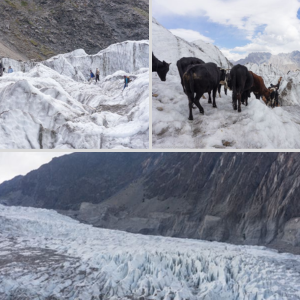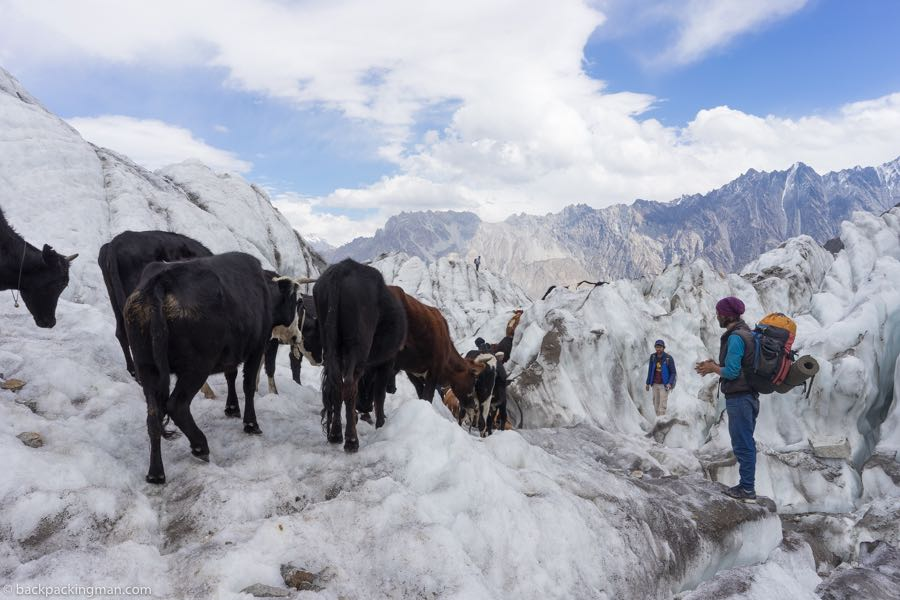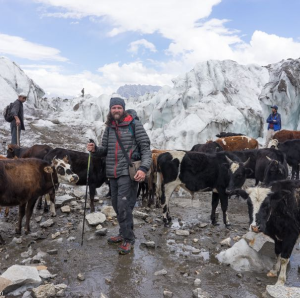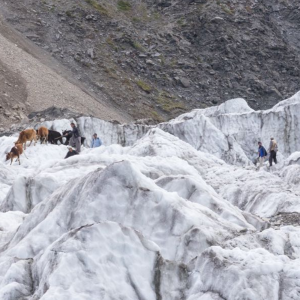from 0 review
3 days and 2 nights
Specific Tour
10 people
chinese, English, Espanol, Francais, german, Japanese

“Cattle Migration” is the journey from Ghulkin Village to Patundas Meadows—a route defined by a centuries-old pastoral migration and a strange, modern mystery known as the “Glitch of the Cattle Migration.”Deep in the heart of the Karakoram Range, where ancient traditions are etched into the very glaciers, lies an adventure that transcends a typical trek.
For the intrepid traveller seeking a profound experience in 2026, Cattle Migration is more than a hike; it’s a front-row seat to a cultural spectacle set against one of the most dramatic backdrops on Earth.
Ghulkin Village is a serene settlement of warm hospitality and terraced fields, perched beside the stunning Ghulkin Glacier. For generations, the farmers here have practised the seasonal movement of livestock. Each summer, as the valleys warm, they guide their herds of oxen, goats, and sheep on a challenging ascent to the lush, high-altitude pastures of Patundas Meadows.
This journey isn’t just for grazing; it’s a deeply ingrained cultural ritual. Patundas also serves as the crucial base camp for mountaineers attempting the formidable Passu Peak (7478M) and Shisper Peak (7611M), making it a confluence of traditional life and extreme adventure.
The “Cattle Trip” is the local name for this annual migration. The “Glitch,” however, is a term coined by awe-struck modern travelers who witness the event in the unique environment of the Karakoram.
Imagine this scene: Number of animals, their bells clanging, are driven across the stark, silent expanse of the Passu Glacier. Against the immense, jagged peaks, the senses are overwhelmed, and then it happens:
To experience this, precise timing and respect for the local culture are key.
Best Time to Go: Plan your expedition for the migration window, typically from late June to mid-July. This ensures the safest conditions for crossing the Passu Glacier and the highest chance of encountering the herders from Ghulkin.
The Trekking Route:
Essential Planning Tips for 2026:
The Cattle Migration journey from Ghulkin to Patundas is a highlight reel of the Karakoram’s best features: humble villages, mighty glaciers, and soaring peaks. But the chance to witness the annual cattle migration and its accompanying “Glitch” transforms it into a story you’ll tell for a lifetime. It’s a powerful reminder of the enduring harmony between culture and nature in one of the world’s most extreme environments.
Have you witnessed a Cattle migration or a natural phenomenon that felt surreal? Share your stories or questions about Hunza in the comments below!
The tour starts early morning from Ghulkin village of Hunza. The cattle are gathered and guided along the KKH to Hussaini village and onward to Borith Lake . You may join the trek from Borith or Ghulkin (your choice). From Borith the cattle are taken slowly to Kuk Hail (a pastural settlement on the home side of Passu Glacier. If time permits the members will survey the complete trek on the Passu Glacier before evening , if not then it will be done in the morning. You will have night stay at Kuk Hail and visualise the next day event.



In the morning members will take their tools to make the way for the cattle on the Glacier. the tools like Ice Axe, Cutter Axe, Pick mattock, shovel and rope etc. They cut through the glacier and make way for the cattle.
Before midday the route is clear and the cattle is lined up so that they do not push each other in to any glacier crevasse. You may be employed (if you desire) to help in maintaining discipline .
The most difficult task during the crossing is rescue of fallen cattle into the crevasse. If it is a dry crevasse, the rescue will be relatively easier but if the crevasse is water filled the rescue will be really difficult. You will not be part of the rescue mission unless you do it voluntarily at your own risk.
Before evening you will cross the glacier to the "Patundas Meadows" side and take rest and enjoy the evening story telling.
In the morning you have the choice to fall back to Borith as per the tour plan or you may climb up the Patundas meadows to enjoy the serenity of "Patundas meadows". In the letter choice it will have additional cost as one more day will be added to the itinerary.
Leave a review